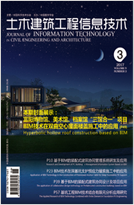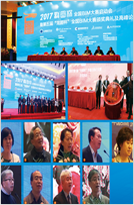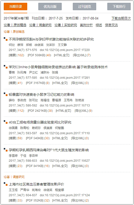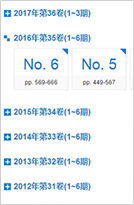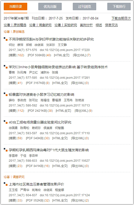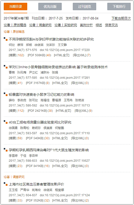2012, 4(3): 13-18.
建筑材料制品碳排放测算模型研究
华中科技大学 工程管理研究所,湖北武汉 430074 |
Research on Carbon Emissions of Building Materials Products
Institute of Construction Management, Huazhong University of Science and Technology, Wuhan 430074, China |
引用本文:
林兴贵, 周济, 程晶, 付菲菲. 建筑材料制品碳排放测算模型研究[J]. 土木建筑工程信息技术,
2012, 4(3): 13-18.

Citation:
Lin Xinggui, Zhou Ji, Chen jing, Fu Feifei. Research on Carbon Emissions of Building Materials Products[J]. Journal of Information Technologyin Civil Engineering and Architecture,
2012, 4(3): 13-18.

摘要:通过对于国内外建筑材料碳排放测算的相关研究进行总结分析后,本文提出了基于全生命周期理论的建筑材料制品碳排放测算模型,即将建筑材料制品的全生命周期界定为从其原材料获取到最终报废或回收的整个时间段,着重分析了建筑材料制品各个阶段碳排放来源,明确各阶段碳排放的计算方法,同时以蒸压粉煤灰标砖的碳排放测算为例进行测算验证。研究结果表明,本文对于建筑材料制品碳源分析及其计算方法是可行的,同时通过计算分析蒸压粉煤灰标砖生产各个阶段及其生产工艺对其排放量的影响值,有针对性的提出改进相关生产工艺的建议以降低其碳排放量。通过本文的研究,以期能对今后建筑材料制品的碳排放测算具有借鉴意义。
Abstract: This article proposes an accounting model of carbon emissions of construction materials products by a careful analysis of related researches of carbon emissions accounting of construction materials products in the world. Especially, this paper makes a special effort to analyze the source of construction materials products' carbon emissions in different stages. Also, the calculating methods of carbon emissions in different stages are defined in this paper. And autoclaved fly ash brick is taken as an example to verify the calculating methods. Then the outcome reveals that the analysis of carbon source of construction materials products and the corresponding calculating methods are feasible. Simultaneously, the impact of production technology on carbon emissions of construction materials products can be determined through the calculating. Moreover, special improvements can be put forward to optimize the production technology of raw materials of construction materials products. By doing the research in this paper, it is hoped that the research has its significance to the future study of accounting of carbon emissions of building materials.
| [1] |
Hetherington., R., R. Laney., S. Peake., Zero and Low Carbon Buildings: A Driver for Change in Working Practices and the Use of Computer Modelling and Visualization[J], in 2010 14th International Conference Information Visualisation. 2010. |
| [2] |
Dr. Grunau, J., Dr. R. Chadwick., C. Dumoulin., Construction CO2 Measurement Protocol[J]. encord, 2010(First Issue (Rev K)-08 February 2010). |
| [3] |
中华人民共和国国务院, 中国碳减排目标[M]. 2009, 新华社: 北京. |
| [4] |
崔素萍, 刘伟. 水泥生产过程CO_2减排潜力分析[J]. 中国水泥, 2008(04): 第57-59页. |
| [5] |
国家统计局能源统计司与国家能源局综合司, 中国能源统计年鉴[M]. 2008, 中国统计出版社: 北京. |
| [6] |
IPCC国家温室气体清单特别工作组, 2006年IPCC国家温室气体清单指南[M]. E. H. S. 等, E. H. S. 等. Editors. 2006, 日本全球环境战略研究所. 第10-67页. |
| [7] |
Technology, N. I. O. S., B. A. F. R. Laboratory, BEES 4. 0——Building for Environmental and Economic Sustainability Technical Manual and User Guide[J]. 2007, National Institute of Standards and Technology: USA. p. 1-271. |
| [8] |
Tae, S., C. Baek, S. Shin, Life cycle CO2 evaluation on reinforced concrete structures with high-strength concrete[J]. Elsevier, 2010. |
| [9] |
ELLISl, GARTNER, Industrially interesting approaches to 'low-CO2' cements[J]. Cement and Concrete Research. 2004. p. 1489-1498. |
| [10] |
Stadel, A., J. Eboli, A. Ryberg, Intelligent Sustainable Design: Integration of Carbon Accounting and Building Information Modeling[J]. ASCE, 2011. |
| [11] |
赵平, 同继锋, 马眷荣. 建筑材料环境负荷指标及评价体系的研究[J]. 中国建材科技, 2004(06): 第1-7页. |
| [12] |
帅小根, 李惠强, 李思堂. 混凝土物化资源耗竭影响的定量评价[J]. 水电能源科学, 2009(03): 第100-103页. |
| [13] |
贺成龙, 吴建华, 刘文莉. 水泥生态足迹计算方法[J]. 生态学报, 2009(07): 第3549-3558页. |
| [14] |
张智慧, 尚春静, 钱坤. 建筑生命周期碳排放评价[J]. 建筑经济, 2010(02): 第44-46页. |
| [15] |
张丽, 刘长滨. 建筑产品的全寿命周期环境影响评价[J]. 北京交通大学学报(社会科学版), 2005(04): 第39-42页. |
| [16] |
张艳荣. 粉煤灰在建筑材料中的资源化利用[J]. 中国建材科技, 2008(04): 第65-67页. |
| [17] |
仲平. 建筑生命周期能源消耗及其环境影响研究[J]. 2005, 四川大学. |
| [18] |
李庆繁, 高连玉, 赵成文. 高性能蒸压粉煤灰砖的生产工艺[J]. 砖瓦, 2010(03): 第3-7页. |
| [19] |
翟雪, 徐晓勇, 马彦飞. 蒸压粉煤灰砖的生产工艺研究[J]. 江苏建材, 2011(04): 第21-24页. |
| [20] |
国家发改委, 2010年中国区域电网基准线排放因子[R]. 2010. |
| [21] |
6亿块/年蒸压粉煤灰标砖生产项目建议书. 鄂州建材产业园. [EB/OL], [2012-6-3]. http://www.hbbsdjc.com/201006/c0725.htm |
计量
- PDF下载量(9)
- 文章访问量(1166)
- HTML全文浏览量(1060)



